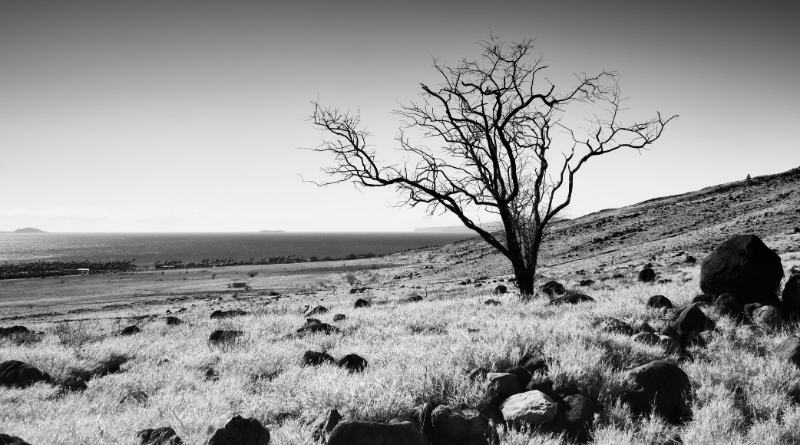Emotional resilience: are you an oak or a willow?
Nelson Mandela once said, “Do not judge me by my success – judge me by how many times I fell and got back up again”.
For some of us, the art of resilience is about building strength to bear the strain, for others it’s about growing new shoots to start again, and for many of us it’s just looking for someone or something to lean against until you can stand on your own again.
And that’s the point – achieving and maintaining resilience means having a choice, being able to decide how to think and which tool will work for which situation.
When we consider emotional resilience specifically, building that strength comes from being able to consciously review and instigate how you respond to stress, pressure, environmental impactors and the rest of life’s curveballs.
Most often, stress and overwhelm occurs because of the enormous pressure we place on ourselves to succeed and achieve either for ourselves or others – and of course, this has been even more evident over the last year.
Another telling quote is from Hillary Clinton, who says “Always take criticism seriously but never personally” – negative self-talk can break into our stash of response choices when we’re deciding how to handle difficult situations. In fact, sometimes that negative self-talk can make us feel like we don’t have any choices at all.
So, what often happens is we hear “I’ve failed”, “I can’t cope” “I’m not capable of dealing with this” etc, particularly when you can see others around you in your business network, family or friends seemingly coping very well with similar pressures. This feeling is called ‘Despair and Compare’ and if we aren’t able to break out of these thoughts our emotional resilience will eventually fracture and collapse.
But how do we strengthen our emotional resilience and find the responses that mean we can CHOOSE how to respond rather than be driven to despair? Here’s a quick technique to try:
Look through your hero’s eyes:
Who do you know that you admire? Who is the colleague or friend that always manages to cope with the stresses and pressures of business and life?
Try thinking like they think, mirror their behaviour, and imagine what they would do in the same circumstances – or even what they would advise you to do. Don’t forget that this person might be YOU in a different time or during different circumstances…
Try to identify what you perceive to be your ‘gap’ and review who amongst your colleagues, friends or family demonstrates the way YOU would like to respond. What do they do – how do they do it – what do they say – what’s their strategy?
Once you’ve reviewed all this, try their responses on for size – act as if you are them and see how it effects the way you think of the stress, problem, or pressure.
The way you think effects the way you feel so you’re likely to uncover a different way of responding – so the next time you feel stress or overwhelm, you’ve got a CHOICE of how to respond…and the more you do it, the easier it becomes – AND – you may realise that you are more like them than you think.
So – don’t despair & compare – MODEL & ASPIRE instead
Strengthening Emotional Resilience means focusing on creating positive, resourceful emotional states as a matter of course, and practising the skill of lessening negative self-talk.
We all know instinctively that what we think about effects how we feel, however the link between how we feel and how we behave is not so obvious. We often believe we’re great at behaving ‘professionally’, managing our feelings and not showing overwhelm or stress – however even if we’re old hands at this, it’s just not sustainable.
When pressure or stress strikes, words like worry, anger, frustration, helpless, stuck, can describe how we feel – and that forces behaviour like short temper, lashing out at others, closed minds and non-listening (to others, although we always hear our internal voices!). Procrastination is another common stress response – knocking us off course and creating a whole raft of ‘interesting’ things to do that are more important than the growing workload! Here’s a great way to consider procrastination:
Towards and away from:
When you next feel under pressure with your workload, grab a notebook and record ALL the actions you take to completing that piece of work – that means ALL the actions.
Here’s an example from one of mine from a few years ago
- look at the task
- make a cup of tea
- call a friend for a quick catch up
- pop the washing on (working from home even then!)
- its lunchtime now so I’ll just have a sandwich
- tidy the fridge magnets (my lowest point!!)
- I’ll tackle it again tomorrow…
Once you can clearly identify your very own personal Towards and Away behaviour, think about why procrastination is happening
Is the work boring? Try reminding yourself of the purpose of this work for you, your team, your client, or your business – re-inject that reason and value
Is it new, difficult, or complex? Do you need to ask for help? Or should you be chunking this piece of work out and do it in ‘sprints’
Is it that you just don’t want to do it? If this is the case, and you see no value in what you’re doing and you’re unable to delegate it – ask yourself, what would happen if you didn’t?
Another way to create emotional resilience is RE-FRAMING. We tend to remember things that haven’t gone as we’d planned as ‘failures’ – which makes it tough to face similar challenges. Looking at them through a different ‘window’ and simply changing your negative internal dialogue can shift your thinking – and we know now that the way we think effects how we feel – and the way we feel effects how we behave.
Here are some examples:
| How I DON’T want to feel | How I DO want to feel |
| I’m feeling pressured and not coping, I just feel rushed, I don’t know what to do I don’t want to feel rushed, I don’t want to feel overwhelmed | I want to feel in control I want to feel relaxed and composed I am in control, I can learn from others I am feeling positive, I can do this I am organised and have a plan I have all the tools, support and resource to achieve what I want |
Oak or willow?
Finally, emotional resilience is all about the choices we create for ourselves, so we aren’t forced to take only one path to stress, pressure and overwhelm. Flexibility in our responses helps to create that all important positive state – remember this old saying…“The oak fought the wind and was broken, the willow bent when it must and survived” – Robert Jordan, The Fires Of Heaven.
Originally posted 2021-03-31 12:43:52.
- Review your operations through the lens of the customer - January 9, 2026
- The journey to being a strong leader - December 16, 2025
- 5 common presenting mistakes and how to avoid them - September 22, 2025






